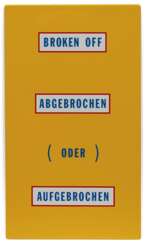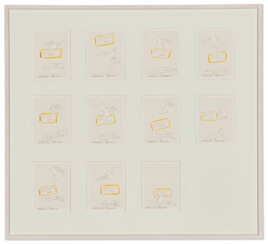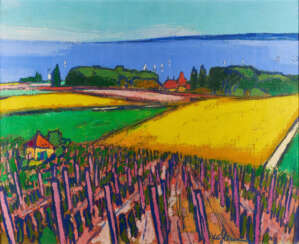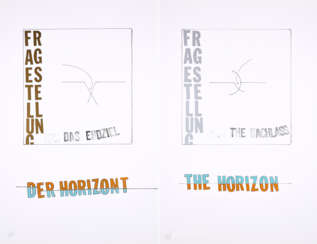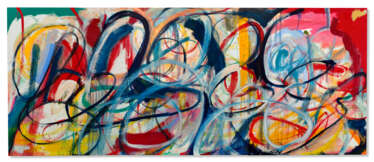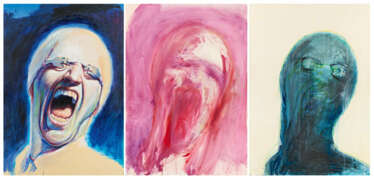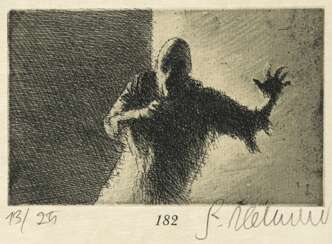wein





Lawrence Charles Weiner was an American conceptual artist, known for his text-based installations and radical definitions of art. Born on February 10, 1942, in the Bronx, New York, and passing away on December 2, 2021, Weiner played a pivotal role in the development of the conceptual art movement of the 1960s. Growing up in the South Bronx and dropping out of college in his first year, he traveled across North America, undertaking various jobs and beginning to create paintings. His early work, "Cratering Pieces" (1960), marked a departure from traditional art forms, involving unauthorized explosive experiments in a California state park, the results of which he declared as sculptures. This act of anti-establishment creativity laid the foundation for his career in challenging conventional art norms.
In 1964, Weiner began exhibiting at the Seth Siegelaub Contemporary Art Gallery in New York City. His work "Hay, Mesh, String" (1968), installed at Windham College in Vermont, exemplified his minimalist approach, consisting of stakes connected by twine to form a rectangle, further emphasizing his exploration of space and the conceptual over the physical.
Weiner's artworks, characterized by the use of language as the primary medium, invite viewers to engage with art from a new perspective, challenging traditional notions of materiality and creation. His contributions to the art world have secured his place as a key figure in collections and exhibitions globally, including prestigious museums and galleries.
For collectors and experts in art and antiques, studying Weiner's work provides deep insights into the conceptual art movement and its ongoing relevance in contemporary culture. His radical approaches and emphasis on concept over physical creation continue to stimulate discussion and reflection within the art community.
To stay informed about new sales offerings and auction events related to Lawrence Weiner, we invite you to sign up for our updates. These subscriptions are designed to keep you informed exclusively about relevant events and opportunities that could enrich your interest and collection.


Lawrence Charles Weiner was an American conceptual artist, known for his text-based installations and radical definitions of art. Born on February 10, 1942, in the Bronx, New York, and passing away on December 2, 2021, Weiner played a pivotal role in the development of the conceptual art movement of the 1960s. Growing up in the South Bronx and dropping out of college in his first year, he traveled across North America, undertaking various jobs and beginning to create paintings. His early work, "Cratering Pieces" (1960), marked a departure from traditional art forms, involving unauthorized explosive experiments in a California state park, the results of which he declared as sculptures. This act of anti-establishment creativity laid the foundation for his career in challenging conventional art norms.
In 1964, Weiner began exhibiting at the Seth Siegelaub Contemporary Art Gallery in New York City. His work "Hay, Mesh, String" (1968), installed at Windham College in Vermont, exemplified his minimalist approach, consisting of stakes connected by twine to form a rectangle, further emphasizing his exploration of space and the conceptual over the physical.
Weiner's artworks, characterized by the use of language as the primary medium, invite viewers to engage with art from a new perspective, challenging traditional notions of materiality and creation. His contributions to the art world have secured his place as a key figure in collections and exhibitions globally, including prestigious museums and galleries.
For collectors and experts in art and antiques, studying Weiner's work provides deep insights into the conceptual art movement and its ongoing relevance in contemporary culture. His radical approaches and emphasis on concept over physical creation continue to stimulate discussion and reflection within the art community.
To stay informed about new sales offerings and auction events related to Lawrence Weiner, we invite you to sign up for our updates. These subscriptions are designed to keep you informed exclusively about relevant events and opportunities that could enrich your interest and collection.


Lawrence Charles Weiner was an American conceptual artist, known for his text-based installations and radical definitions of art. Born on February 10, 1942, in the Bronx, New York, and passing away on December 2, 2021, Weiner played a pivotal role in the development of the conceptual art movement of the 1960s. Growing up in the South Bronx and dropping out of college in his first year, he traveled across North America, undertaking various jobs and beginning to create paintings. His early work, "Cratering Pieces" (1960), marked a departure from traditional art forms, involving unauthorized explosive experiments in a California state park, the results of which he declared as sculptures. This act of anti-establishment creativity laid the foundation for his career in challenging conventional art norms.
In 1964, Weiner began exhibiting at the Seth Siegelaub Contemporary Art Gallery in New York City. His work "Hay, Mesh, String" (1968), installed at Windham College in Vermont, exemplified his minimalist approach, consisting of stakes connected by twine to form a rectangle, further emphasizing his exploration of space and the conceptual over the physical.
Weiner's artworks, characterized by the use of language as the primary medium, invite viewers to engage with art from a new perspective, challenging traditional notions of materiality and creation. His contributions to the art world have secured his place as a key figure in collections and exhibitions globally, including prestigious museums and galleries.
For collectors and experts in art and antiques, studying Weiner's work provides deep insights into the conceptual art movement and its ongoing relevance in contemporary culture. His radical approaches and emphasis on concept over physical creation continue to stimulate discussion and reflection within the art community.
To stay informed about new sales offerings and auction events related to Lawrence Weiner, we invite you to sign up for our updates. These subscriptions are designed to keep you informed exclusively about relevant events and opportunities that could enrich your interest and collection.


Gottfried Helnwein is an Austrian-Irish visual artist. He has worked as a painter, draftsman, photographer, muralist, sculptor, installation and performance artist, using a wide variety of techniques and media.
His work is concerned primarily with psychological and sociological anxiety, historical issues and political topics. His subject matter is the human condition. The metaphor for his art is dominated by the image of the child, particularly the wounded child, scarred physically and emotionally from within. His works often reference taboo and controversial issues from recent history, especially the Nazi rule and the horror of the Holocaust. As a result, his work is often considered provocative and controversial.


Gottfried Helnwein is an Austrian-Irish visual artist. He has worked as a painter, draftsman, photographer, muralist, sculptor, installation and performance artist, using a wide variety of techniques and media.
His work is concerned primarily with psychological and sociological anxiety, historical issues and political topics. His subject matter is the human condition. The metaphor for his art is dominated by the image of the child, particularly the wounded child, scarred physically and emotionally from within. His works often reference taboo and controversial issues from recent history, especially the Nazi rule and the horror of the Holocaust. As a result, his work is often considered provocative and controversial.


Lawrence Charles Weiner was an American conceptual artist, known for his text-based installations and radical definitions of art. Born on February 10, 1942, in the Bronx, New York, and passing away on December 2, 2021, Weiner played a pivotal role in the development of the conceptual art movement of the 1960s. Growing up in the South Bronx and dropping out of college in his first year, he traveled across North America, undertaking various jobs and beginning to create paintings. His early work, "Cratering Pieces" (1960), marked a departure from traditional art forms, involving unauthorized explosive experiments in a California state park, the results of which he declared as sculptures. This act of anti-establishment creativity laid the foundation for his career in challenging conventional art norms.
In 1964, Weiner began exhibiting at the Seth Siegelaub Contemporary Art Gallery in New York City. His work "Hay, Mesh, String" (1968), installed at Windham College in Vermont, exemplified his minimalist approach, consisting of stakes connected by twine to form a rectangle, further emphasizing his exploration of space and the conceptual over the physical.
Weiner's artworks, characterized by the use of language as the primary medium, invite viewers to engage with art from a new perspective, challenging traditional notions of materiality and creation. His contributions to the art world have secured his place as a key figure in collections and exhibitions globally, including prestigious museums and galleries.
For collectors and experts in art and antiques, studying Weiner's work provides deep insights into the conceptual art movement and its ongoing relevance in contemporary culture. His radical approaches and emphasis on concept over physical creation continue to stimulate discussion and reflection within the art community.
To stay informed about new sales offerings and auction events related to Lawrence Weiner, we invite you to sign up for our updates. These subscriptions are designed to keep you informed exclusively about relevant events and opportunities that could enrich your interest and collection.


Lawrence Charles Weiner was an American conceptual artist, known for his text-based installations and radical definitions of art. Born on February 10, 1942, in the Bronx, New York, and passing away on December 2, 2021, Weiner played a pivotal role in the development of the conceptual art movement of the 1960s. Growing up in the South Bronx and dropping out of college in his first year, he traveled across North America, undertaking various jobs and beginning to create paintings. His early work, "Cratering Pieces" (1960), marked a departure from traditional art forms, involving unauthorized explosive experiments in a California state park, the results of which he declared as sculptures. This act of anti-establishment creativity laid the foundation for his career in challenging conventional art norms.
In 1964, Weiner began exhibiting at the Seth Siegelaub Contemporary Art Gallery in New York City. His work "Hay, Mesh, String" (1968), installed at Windham College in Vermont, exemplified his minimalist approach, consisting of stakes connected by twine to form a rectangle, further emphasizing his exploration of space and the conceptual over the physical.
Weiner's artworks, characterized by the use of language as the primary medium, invite viewers to engage with art from a new perspective, challenging traditional notions of materiality and creation. His contributions to the art world have secured his place as a key figure in collections and exhibitions globally, including prestigious museums and galleries.
For collectors and experts in art and antiques, studying Weiner's work provides deep insights into the conceptual art movement and its ongoing relevance in contemporary culture. His radical approaches and emphasis on concept over physical creation continue to stimulate discussion and reflection within the art community.
To stay informed about new sales offerings and auction events related to Lawrence Weiner, we invite you to sign up for our updates. These subscriptions are designed to keep you informed exclusively about relevant events and opportunities that could enrich your interest and collection.


Lawrence Charles Weiner was an American conceptual artist, known for his text-based installations and radical definitions of art. Born on February 10, 1942, in the Bronx, New York, and passing away on December 2, 2021, Weiner played a pivotal role in the development of the conceptual art movement of the 1960s. Growing up in the South Bronx and dropping out of college in his first year, he traveled across North America, undertaking various jobs and beginning to create paintings. His early work, "Cratering Pieces" (1960), marked a departure from traditional art forms, involving unauthorized explosive experiments in a California state park, the results of which he declared as sculptures. This act of anti-establishment creativity laid the foundation for his career in challenging conventional art norms.
In 1964, Weiner began exhibiting at the Seth Siegelaub Contemporary Art Gallery in New York City. His work "Hay, Mesh, String" (1968), installed at Windham College in Vermont, exemplified his minimalist approach, consisting of stakes connected by twine to form a rectangle, further emphasizing his exploration of space and the conceptual over the physical.
Weiner's artworks, characterized by the use of language as the primary medium, invite viewers to engage with art from a new perspective, challenging traditional notions of materiality and creation. His contributions to the art world have secured his place as a key figure in collections and exhibitions globally, including prestigious museums and galleries.
For collectors and experts in art and antiques, studying Weiner's work provides deep insights into the conceptual art movement and its ongoing relevance in contemporary culture. His radical approaches and emphasis on concept over physical creation continue to stimulate discussion and reflection within the art community.
To stay informed about new sales offerings and auction events related to Lawrence Weiner, we invite you to sign up for our updates. These subscriptions are designed to keep you informed exclusively about relevant events and opportunities that could enrich your interest and collection.
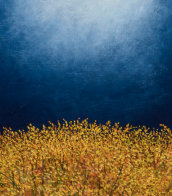

Lawrence Charles Weiner was an American conceptual artist, known for his text-based installations and radical definitions of art. Born on February 10, 1942, in the Bronx, New York, and passing away on December 2, 2021, Weiner played a pivotal role in the development of the conceptual art movement of the 1960s. Growing up in the South Bronx and dropping out of college in his first year, he traveled across North America, undertaking various jobs and beginning to create paintings. His early work, "Cratering Pieces" (1960), marked a departure from traditional art forms, involving unauthorized explosive experiments in a California state park, the results of which he declared as sculptures. This act of anti-establishment creativity laid the foundation for his career in challenging conventional art norms.
In 1964, Weiner began exhibiting at the Seth Siegelaub Contemporary Art Gallery in New York City. His work "Hay, Mesh, String" (1968), installed at Windham College in Vermont, exemplified his minimalist approach, consisting of stakes connected by twine to form a rectangle, further emphasizing his exploration of space and the conceptual over the physical.
Weiner's artworks, characterized by the use of language as the primary medium, invite viewers to engage with art from a new perspective, challenging traditional notions of materiality and creation. His contributions to the art world have secured his place as a key figure in collections and exhibitions globally, including prestigious museums and galleries.
For collectors and experts in art and antiques, studying Weiner's work provides deep insights into the conceptual art movement and its ongoing relevance in contemporary culture. His radical approaches and emphasis on concept over physical creation continue to stimulate discussion and reflection within the art community.
To stay informed about new sales offerings and auction events related to Lawrence Weiner, we invite you to sign up for our updates. These subscriptions are designed to keep you informed exclusively about relevant events and opportunities that could enrich your interest and collection.


Lawrence Charles Weiner was an American conceptual artist, known for his text-based installations and radical definitions of art. Born on February 10, 1942, in the Bronx, New York, and passing away on December 2, 2021, Weiner played a pivotal role in the development of the conceptual art movement of the 1960s. Growing up in the South Bronx and dropping out of college in his first year, he traveled across North America, undertaking various jobs and beginning to create paintings. His early work, "Cratering Pieces" (1960), marked a departure from traditional art forms, involving unauthorized explosive experiments in a California state park, the results of which he declared as sculptures. This act of anti-establishment creativity laid the foundation for his career in challenging conventional art norms.
In 1964, Weiner began exhibiting at the Seth Siegelaub Contemporary Art Gallery in New York City. His work "Hay, Mesh, String" (1968), installed at Windham College in Vermont, exemplified his minimalist approach, consisting of stakes connected by twine to form a rectangle, further emphasizing his exploration of space and the conceptual over the physical.
Weiner's artworks, characterized by the use of language as the primary medium, invite viewers to engage with art from a new perspective, challenging traditional notions of materiality and creation. His contributions to the art world have secured his place as a key figure in collections and exhibitions globally, including prestigious museums and galleries.
For collectors and experts in art and antiques, studying Weiner's work provides deep insights into the conceptual art movement and its ongoing relevance in contemporary culture. His radical approaches and emphasis on concept over physical creation continue to stimulate discussion and reflection within the art community.
To stay informed about new sales offerings and auction events related to Lawrence Weiner, we invite you to sign up for our updates. These subscriptions are designed to keep you informed exclusively about relevant events and opportunities that could enrich your interest and collection.


Lawrence Charles Weiner was an American conceptual artist, known for his text-based installations and radical definitions of art. Born on February 10, 1942, in the Bronx, New York, and passing away on December 2, 2021, Weiner played a pivotal role in the development of the conceptual art movement of the 1960s. Growing up in the South Bronx and dropping out of college in his first year, he traveled across North America, undertaking various jobs and beginning to create paintings. His early work, "Cratering Pieces" (1960), marked a departure from traditional art forms, involving unauthorized explosive experiments in a California state park, the results of which he declared as sculptures. This act of anti-establishment creativity laid the foundation for his career in challenging conventional art norms.
In 1964, Weiner began exhibiting at the Seth Siegelaub Contemporary Art Gallery in New York City. His work "Hay, Mesh, String" (1968), installed at Windham College in Vermont, exemplified his minimalist approach, consisting of stakes connected by twine to form a rectangle, further emphasizing his exploration of space and the conceptual over the physical.
Weiner's artworks, characterized by the use of language as the primary medium, invite viewers to engage with art from a new perspective, challenging traditional notions of materiality and creation. His contributions to the art world have secured his place as a key figure in collections and exhibitions globally, including prestigious museums and galleries.
For collectors and experts in art and antiques, studying Weiner's work provides deep insights into the conceptual art movement and its ongoing relevance in contemporary culture. His radical approaches and emphasis on concept over physical creation continue to stimulate discussion and reflection within the art community.
To stay informed about new sales offerings and auction events related to Lawrence Weiner, we invite you to sign up for our updates. These subscriptions are designed to keep you informed exclusively about relevant events and opportunities that could enrich your interest and collection.


Lawrence Charles Weiner was an American conceptual artist, known for his text-based installations and radical definitions of art. Born on February 10, 1942, in the Bronx, New York, and passing away on December 2, 2021, Weiner played a pivotal role in the development of the conceptual art movement of the 1960s. Growing up in the South Bronx and dropping out of college in his first year, he traveled across North America, undertaking various jobs and beginning to create paintings. His early work, "Cratering Pieces" (1960), marked a departure from traditional art forms, involving unauthorized explosive experiments in a California state park, the results of which he declared as sculptures. This act of anti-establishment creativity laid the foundation for his career in challenging conventional art norms.
In 1964, Weiner began exhibiting at the Seth Siegelaub Contemporary Art Gallery in New York City. His work "Hay, Mesh, String" (1968), installed at Windham College in Vermont, exemplified his minimalist approach, consisting of stakes connected by twine to form a rectangle, further emphasizing his exploration of space and the conceptual over the physical.
Weiner's artworks, characterized by the use of language as the primary medium, invite viewers to engage with art from a new perspective, challenging traditional notions of materiality and creation. His contributions to the art world have secured his place as a key figure in collections and exhibitions globally, including prestigious museums and galleries.
For collectors and experts in art and antiques, studying Weiner's work provides deep insights into the conceptual art movement and its ongoing relevance in contemporary culture. His radical approaches and emphasis on concept over physical creation continue to stimulate discussion and reflection within the art community.
To stay informed about new sales offerings and auction events related to Lawrence Weiner, we invite you to sign up for our updates. These subscriptions are designed to keep you informed exclusively about relevant events and opportunities that could enrich your interest and collection.


Lawrence Charles Weiner was an American conceptual artist, known for his text-based installations and radical definitions of art. Born on February 10, 1942, in the Bronx, New York, and passing away on December 2, 2021, Weiner played a pivotal role in the development of the conceptual art movement of the 1960s. Growing up in the South Bronx and dropping out of college in his first year, he traveled across North America, undertaking various jobs and beginning to create paintings. His early work, "Cratering Pieces" (1960), marked a departure from traditional art forms, involving unauthorized explosive experiments in a California state park, the results of which he declared as sculptures. This act of anti-establishment creativity laid the foundation for his career in challenging conventional art norms.
In 1964, Weiner began exhibiting at the Seth Siegelaub Contemporary Art Gallery in New York City. His work "Hay, Mesh, String" (1968), installed at Windham College in Vermont, exemplified his minimalist approach, consisting of stakes connected by twine to form a rectangle, further emphasizing his exploration of space and the conceptual over the physical.
Weiner's artworks, characterized by the use of language as the primary medium, invite viewers to engage with art from a new perspective, challenging traditional notions of materiality and creation. His contributions to the art world have secured his place as a key figure in collections and exhibitions globally, including prestigious museums and galleries.
For collectors and experts in art and antiques, studying Weiner's work provides deep insights into the conceptual art movement and its ongoing relevance in contemporary culture. His radical approaches and emphasis on concept over physical creation continue to stimulate discussion and reflection within the art community.
To stay informed about new sales offerings and auction events related to Lawrence Weiner, we invite you to sign up for our updates. These subscriptions are designed to keep you informed exclusively about relevant events and opportunities that could enrich your interest and collection.


Lawrence Charles Weiner was an American conceptual artist, known for his text-based installations and radical definitions of art. Born on February 10, 1942, in the Bronx, New York, and passing away on December 2, 2021, Weiner played a pivotal role in the development of the conceptual art movement of the 1960s. Growing up in the South Bronx and dropping out of college in his first year, he traveled across North America, undertaking various jobs and beginning to create paintings. His early work, "Cratering Pieces" (1960), marked a departure from traditional art forms, involving unauthorized explosive experiments in a California state park, the results of which he declared as sculptures. This act of anti-establishment creativity laid the foundation for his career in challenging conventional art norms.
In 1964, Weiner began exhibiting at the Seth Siegelaub Contemporary Art Gallery in New York City. His work "Hay, Mesh, String" (1968), installed at Windham College in Vermont, exemplified his minimalist approach, consisting of stakes connected by twine to form a rectangle, further emphasizing his exploration of space and the conceptual over the physical.
Weiner's artworks, characterized by the use of language as the primary medium, invite viewers to engage with art from a new perspective, challenging traditional notions of materiality and creation. His contributions to the art world have secured his place as a key figure in collections and exhibitions globally, including prestigious museums and galleries.
For collectors and experts in art and antiques, studying Weiner's work provides deep insights into the conceptual art movement and its ongoing relevance in contemporary culture. His radical approaches and emphasis on concept over physical creation continue to stimulate discussion and reflection within the art community.
To stay informed about new sales offerings and auction events related to Lawrence Weiner, we invite you to sign up for our updates. These subscriptions are designed to keep you informed exclusively about relevant events and opportunities that could enrich your interest and collection.
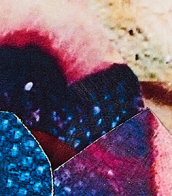

Gottfried Helnwein is an Austrian-Irish visual artist. He has worked as a painter, draftsman, photographer, muralist, sculptor, installation and performance artist, using a wide variety of techniques and media.
His work is concerned primarily with psychological and sociological anxiety, historical issues and political topics. His subject matter is the human condition. The metaphor for his art is dominated by the image of the child, particularly the wounded child, scarred physically and emotionally from within. His works often reference taboo and controversial issues from recent history, especially the Nazi rule and the horror of the Holocaust. As a result, his work is often considered provocative and controversial.


Lawrence Charles Weiner was an American conceptual artist, known for his text-based installations and radical definitions of art. Born on February 10, 1942, in the Bronx, New York, and passing away on December 2, 2021, Weiner played a pivotal role in the development of the conceptual art movement of the 1960s. Growing up in the South Bronx and dropping out of college in his first year, he traveled across North America, undertaking various jobs and beginning to create paintings. His early work, "Cratering Pieces" (1960), marked a departure from traditional art forms, involving unauthorized explosive experiments in a California state park, the results of which he declared as sculptures. This act of anti-establishment creativity laid the foundation for his career in challenging conventional art norms.
In 1964, Weiner began exhibiting at the Seth Siegelaub Contemporary Art Gallery in New York City. His work "Hay, Mesh, String" (1968), installed at Windham College in Vermont, exemplified his minimalist approach, consisting of stakes connected by twine to form a rectangle, further emphasizing his exploration of space and the conceptual over the physical.
Weiner's artworks, characterized by the use of language as the primary medium, invite viewers to engage with art from a new perspective, challenging traditional notions of materiality and creation. His contributions to the art world have secured his place as a key figure in collections and exhibitions globally, including prestigious museums and galleries.
For collectors and experts in art and antiques, studying Weiner's work provides deep insights into the conceptual art movement and its ongoing relevance in contemporary culture. His radical approaches and emphasis on concept over physical creation continue to stimulate discussion and reflection within the art community.
To stay informed about new sales offerings and auction events related to Lawrence Weiner, we invite you to sign up for our updates. These subscriptions are designed to keep you informed exclusively about relevant events and opportunities that could enrich your interest and collection.


Gottfried Helnwein is an Austrian-Irish visual artist. He has worked as a painter, draftsman, photographer, muralist, sculptor, installation and performance artist, using a wide variety of techniques and media.
His work is concerned primarily with psychological and sociological anxiety, historical issues and political topics. His subject matter is the human condition. The metaphor for his art is dominated by the image of the child, particularly the wounded child, scarred physically and emotionally from within. His works often reference taboo and controversial issues from recent history, especially the Nazi rule and the horror of the Holocaust. As a result, his work is often considered provocative and controversial.


Gottfried Helnwein is an Austrian-Irish visual artist. He has worked as a painter, draftsman, photographer, muralist, sculptor, installation and performance artist, using a wide variety of techniques and media.
His work is concerned primarily with psychological and sociological anxiety, historical issues and political topics. His subject matter is the human condition. The metaphor for his art is dominated by the image of the child, particularly the wounded child, scarred physically and emotionally from within. His works often reference taboo and controversial issues from recent history, especially the Nazi rule and the horror of the Holocaust. As a result, his work is often considered provocative and controversial.


Lawrence Charles Weiner was an American conceptual artist, known for his text-based installations and radical definitions of art. Born on February 10, 1942, in the Bronx, New York, and passing away on December 2, 2021, Weiner played a pivotal role in the development of the conceptual art movement of the 1960s. Growing up in the South Bronx and dropping out of college in his first year, he traveled across North America, undertaking various jobs and beginning to create paintings. His early work, "Cratering Pieces" (1960), marked a departure from traditional art forms, involving unauthorized explosive experiments in a California state park, the results of which he declared as sculptures. This act of anti-establishment creativity laid the foundation for his career in challenging conventional art norms.
In 1964, Weiner began exhibiting at the Seth Siegelaub Contemporary Art Gallery in New York City. His work "Hay, Mesh, String" (1968), installed at Windham College in Vermont, exemplified his minimalist approach, consisting of stakes connected by twine to form a rectangle, further emphasizing his exploration of space and the conceptual over the physical.
Weiner's artworks, characterized by the use of language as the primary medium, invite viewers to engage with art from a new perspective, challenging traditional notions of materiality and creation. His contributions to the art world have secured his place as a key figure in collections and exhibitions globally, including prestigious museums and galleries.
For collectors and experts in art and antiques, studying Weiner's work provides deep insights into the conceptual art movement and its ongoing relevance in contemporary culture. His radical approaches and emphasis on concept over physical creation continue to stimulate discussion and reflection within the art community.
To stay informed about new sales offerings and auction events related to Lawrence Weiner, we invite you to sign up for our updates. These subscriptions are designed to keep you informed exclusively about relevant events and opportunities that could enrich your interest and collection.


Lawrence Charles Weiner was an American conceptual artist, known for his text-based installations and radical definitions of art. Born on February 10, 1942, in the Bronx, New York, and passing away on December 2, 2021, Weiner played a pivotal role in the development of the conceptual art movement of the 1960s. Growing up in the South Bronx and dropping out of college in his first year, he traveled across North America, undertaking various jobs and beginning to create paintings. His early work, "Cratering Pieces" (1960), marked a departure from traditional art forms, involving unauthorized explosive experiments in a California state park, the results of which he declared as sculptures. This act of anti-establishment creativity laid the foundation for his career in challenging conventional art norms.
In 1964, Weiner began exhibiting at the Seth Siegelaub Contemporary Art Gallery in New York City. His work "Hay, Mesh, String" (1968), installed at Windham College in Vermont, exemplified his minimalist approach, consisting of stakes connected by twine to form a rectangle, further emphasizing his exploration of space and the conceptual over the physical.
Weiner's artworks, characterized by the use of language as the primary medium, invite viewers to engage with art from a new perspective, challenging traditional notions of materiality and creation. His contributions to the art world have secured his place as a key figure in collections and exhibitions globally, including prestigious museums and galleries.
For collectors and experts in art and antiques, studying Weiner's work provides deep insights into the conceptual art movement and its ongoing relevance in contemporary culture. His radical approaches and emphasis on concept over physical creation continue to stimulate discussion and reflection within the art community.
To stay informed about new sales offerings and auction events related to Lawrence Weiner, we invite you to sign up for our updates. These subscriptions are designed to keep you informed exclusively about relevant events and opportunities that could enrich your interest and collection.


Gottfried Helnwein is an Austrian-Irish visual artist. He has worked as a painter, draftsman, photographer, muralist, sculptor, installation and performance artist, using a wide variety of techniques and media.
His work is concerned primarily with psychological and sociological anxiety, historical issues and political topics. His subject matter is the human condition. The metaphor for his art is dominated by the image of the child, particularly the wounded child, scarred physically and emotionally from within. His works often reference taboo and controversial issues from recent history, especially the Nazi rule and the horror of the Holocaust. As a result, his work is often considered provocative and controversial.


Gottfried Helnwein is an Austrian-Irish visual artist. He has worked as a painter, draftsman, photographer, muralist, sculptor, installation and performance artist, using a wide variety of techniques and media.
His work is concerned primarily with psychological and sociological anxiety, historical issues and political topics. His subject matter is the human condition. The metaphor for his art is dominated by the image of the child, particularly the wounded child, scarred physically and emotionally from within. His works often reference taboo and controversial issues from recent history, especially the Nazi rule and the horror of the Holocaust. As a result, his work is often considered provocative and controversial.


Gottfried Helnwein is an Austrian-Irish visual artist. He has worked as a painter, draftsman, photographer, muralist, sculptor, installation and performance artist, using a wide variety of techniques and media.
His work is concerned primarily with psychological and sociological anxiety, historical issues and political topics. His subject matter is the human condition. The metaphor for his art is dominated by the image of the child, particularly the wounded child, scarred physically and emotionally from within. His works often reference taboo and controversial issues from recent history, especially the Nazi rule and the horror of the Holocaust. As a result, his work is often considered provocative and controversial.


Gottfried Helnwein is an Austrian-Irish visual artist. He has worked as a painter, draftsman, photographer, muralist, sculptor, installation and performance artist, using a wide variety of techniques and media.
His work is concerned primarily with psychological and sociological anxiety, historical issues and political topics. His subject matter is the human condition. The metaphor for his art is dominated by the image of the child, particularly the wounded child, scarred physically and emotionally from within. His works often reference taboo and controversial issues from recent history, especially the Nazi rule and the horror of the Holocaust. As a result, his work is often considered provocative and controversial.


Gottfried Helnwein is an Austrian-Irish visual artist. He has worked as a painter, draftsman, photographer, muralist, sculptor, installation and performance artist, using a wide variety of techniques and media.
His work is concerned primarily with psychological and sociological anxiety, historical issues and political topics. His subject matter is the human condition. The metaphor for his art is dominated by the image of the child, particularly the wounded child, scarred physically and emotionally from within. His works often reference taboo and controversial issues from recent history, especially the Nazi rule and the horror of the Holocaust. As a result, his work is often considered provocative and controversial.





